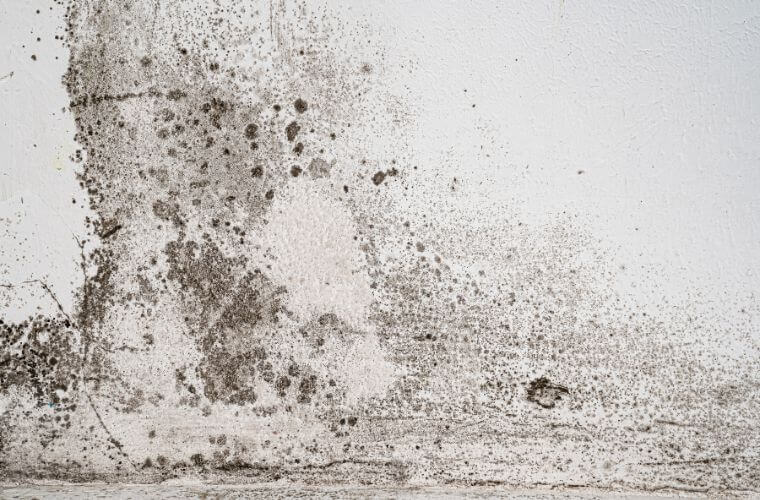
Learning that you may need black mold removal can be outright scary for many homeowners. Black mold is also known as toxic mold, which has been portrayed in the media as a threat to people, animals, and children. The truth about black mold is a little more complicated than what meets the eye. Nevertheless, fast and effective action is necessary to neutralize the threat, protecting your property and the people in it. If you’re concerned about black mold, explore this guide to learn how to streamline mold removal in Toronto for your residential property.
What is Black Mold?
Mold is a category of fungus that exists naturally in the outdoor environment. There are thousands of species of mold that can be detected. In Toronto alone, over 500 species have been identified. While many types of mold appear black and virtually have toxic or harmful effects on those exposed, the species usually referred to as “black mold” is Stachybotrys chartarum.
The Effects of Stachybotrys Chartarum
Stachybotrys chartarum mold has been noted to have a range of harmful effects on people and even animals when it gets inside and forms colonies. The impact on human health and property only worsens as infestations continue unthwarted by mold removal in Toronto. Some early physical indications of mold exposure include sneezing, coughing, runny or stuffy nose, post-nasal drip, throat/skin/eye irritation, and other allergic or cold-like symptoms. As exposure to the mycotoxins released by the black mold colonies advances, the physiological impact progresses to headaches or unexplained migraines, difficulty breathing, brain fog, fatigue, and dread. The mold exposure experience varies on a person-to-person basis, depending on various factors, including immune system strength and level of exposure.
If you or someone in your household is experiencing these symptoms and cannot determine the root cause, restoration specialists recommend conducting mold inspections and testing.
Where is Black Mold in Homes?
Like all species, black mold is attracted to moisture and organic materials. When those two mix in dark environments with low humidity, it creates the perfect conditions for an infestation. Because Stachybotrys Chartarum uses moisture and cellulose as a food source, mold technicians typically uncover colonies in the following areas of the home:
- Attics: Prone to water damage from roof leaks and limited ventilation from vent clogs, attics tend to be humid environments with a surplus of cellulose in the form of wood and insulation.
- Bathrooms & Kitchens: Because of the heavy plumbing and water use, bathrooms and kitchens are warm and wet environments that can attract black mold spores. Grout between tiles and drywall can be a breeding ground for infestations.
- Ceilings: Similar to bathrooms and kitchens, water lines and drain pipes run above the ceiling surface. When backups, burst pipes, or other leaks occur, it quickly soaks wood, drywall, and popcorn ceilings facilitating the advancement of mold colonies.
- Basements & Crawl Spaces: Not frequently accessed by occupants, basements and crawl spaces are prone to water damage, backups, and leaks, while also equipped with insulation that can leave the room vulnerable to unchecked mold infestations.
How to Eliminate Black Mold
Removal is of the utmost importance when it comes to a toxic mold outbreak. While urgency is required, do-it-yourself mold removal in Toronto is not recommended, as it can put you into direct contact with mold. To ensure that black mold is effectively remediated from your home, professional mold inspections and testing is the best starting point. Upon experiencing symptoms or in the immediate aftermath of a water damage incident, contact a trusted restoration company in Toronto to conduct a visible mold inspection. With industry-leading technology, skilled technicians, and years of experience, specialists will be able to identify the source of an outbreak, the scope, and the best steps for remediation.
Guide to Keeping Your Property Mold-Free
Once you’re free of mold, the next order of that business is to protect your home and family from future infestations. Mold is naturally occurring, meaning spores are almost always around, entering in and out of your property through open doors, windows, and vents.
Monitor humidity levels and stay alert to keep them from settling and turning into full-blown outbreaks. The most identifiable visible signs of black mold include greenish-black staining on cellulose surfaces, a distinctly pungent odour, and heightened humidity levels. If you notice any indicators of a new infestation, contact a trusted restoration company for a visible mold inspection and urgent black mold removal in Toronto.
Kane Walker
Related posts
Stay connected
Today's pick
- Things to Remember While Designing Your Custom Modular Kitchen in GurgaonGurgaon now known as Gurugram is the second largest city in the state of Haryana and is a reflectiossn of an ideal modern city with futuristic goals. Witnessing rapid urbanization, it has also emerged as a hub for contemporary homes, with homeowners seeking innovative and... The post Things to Remember While Designing Your Custom Modular […]
